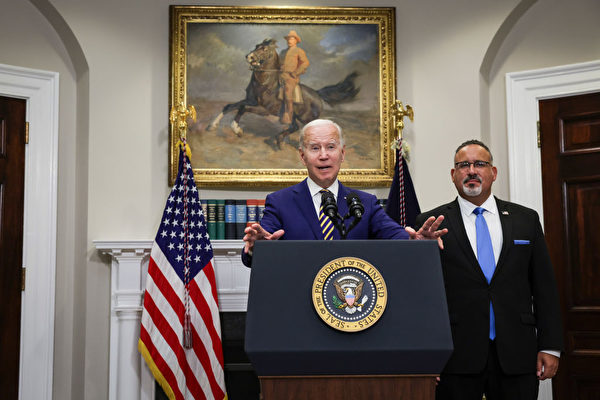The U.S. Supreme Court on Wednesday (August 28) rejected the Biden administration’s request to temporarily reinstate its new student loan forgiveness program. Several weeks ago, an appeals court had halted the program, prompting the Justice Department to file an emergency appeal to the Supreme Court seeking to overturn that decision.
In a brief order, the U.S. Supreme Court rejected the Biden administration’s request, with no apparent dissenting opinion included in the ruling.
The unsigned order from the Supreme Court stated that it is expected for lower courts to make a more comprehensive judgment on the program.
Wednesday’s order is not a final decision, and the ultimate ruling on the legality of the program may eventually return to the Supreme Court.
In mid-July, the U.S. Eighth Circuit Court of Appeals approved requests from seven Republican-led states to pause parts of the new student loan forgiveness program by the U.S. Department of Education that had not been blocked by lower courts.
The Biden administration’s new program, called “Saving on a Valuable Education” (SAVE), officially launched in August 2023 and is an income-driven student loan repayment plan aimed at further reducing student loan debt.
The forgiveness of student loan debt was a campaign promise made by Biden in 2020. In August 2022, the Democratic president announced plans to cancel $10,000 to $20,000 of student loan debt held by over 40 million borrowers, with the cost of the program exceeding $400 billion. This move faced unanimous opposition from Republicans and led to a series of legal challenges. At the end of June 2023, the U.S. Supreme Court rejected this controversial plan. In response, the Biden administration announced a new plan in mid-July and officially launched it over a month later.
According to the White House, the new plan will reduce the monthly repayment amount for undergraduate student loans from 10% of the borrower’s discretionary income to 5%, saving typical borrowers about $1,000 annually. Borrowers earning less than 225% of the federal poverty line ($32,800 annual income for single individuals) will not be required to make repayments under the program.
Estimates of the cost of the new SAVE program vary. Republican-led states believe the program will cost $475 billion over 10 years, while the Biden administration cites the Congressional Budget Office’s estimate of $276 billion.
Certain parts of the program took effect in February of this year, with another part originally set to start in July.
When the U.S. Eighth Circuit Court of Appeals suspended the new SAVE program in July, 8 million people had already enrolled in the program, and Wednesday’s order from the Supreme Court does not directly impact this group of borrowers.

